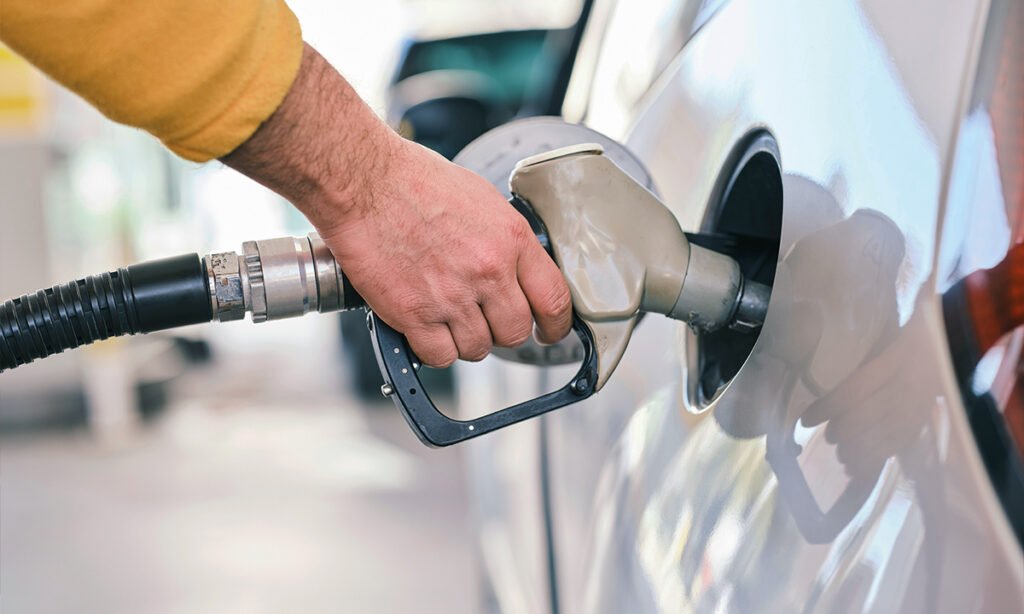For many motorists, filling up with the correct octane number of petrol or the correct quality of diesel is probably as important as whether the specification or quality of the fuel supplied is optimal for their vehicle. But are they correct? 

Looking for a new or used set of wheels? Find it here with CARmag!
Since its introduction in the US in 1966, regulatory vehicle exhaust emissions standards have been adopted and gradually tightened in other markets, requiring automakers to continually develop and refine engine technologies to achieve compliance. As a result, drivers have benefited from improvements in fuel efficiency with each new model generation, while becoming familiar with developments such as catalytic converters, fuel injection, downsized turbocharged engines and other emissions-reducing technologies. Less well known are the improvements oil companies have made in changing fuel formulations to enable and support the development of these new, cleaner engine technologies.
Fuel formulation
Although advances in engine technology have resulted in lower vehicle exhaust emissions, this could not have been achieved without corresponding changes in fuel formulation. In the effort to reduce emissions, one of the first and most important changes in fuel formulation was the removal of lead. Tetraethyl lead was first used in gasoline in 1923 as an anti-knock agent and increased the octane number, allowing higher compression ratios that increased engine efficiency. Unfortunately, it is also extremely harmful to both the environment and human health. As a potent neurotoxin, it causes damage to the central nervous system and impairs neurological development in children, while contamination of the water and food supply has longer-term consequences for cardiovascular and renal health. In 1975, the US Clean Air Act required emissions of CO (carbon monoxide), HC (hydrocarbons) and NOx (nitrogen oxides) to be reduced by 90% compared to then typical emission levels. This heralded the use of catalytic converters in new vehicles, which in turn required the removal of lead from gasoline, as lead residue covers the surface of the catalytic converters, effectively destroying them. The US finally stopped using leaded fuel in 1996, followed by SA in 2006, and by 2021 its use had been phased out worldwide.
Related: Cape Town fuel shortage exposes SA refinery sector’s shortcomings
Since then, the global push to improve air quality has continued and increasingly stringent emissions standards have been adopted. While vehicle manufacturers focused on improving combustion control by optimizing the air-fuel mixture under all load conditions and using more advanced and effective catalysts, this had to be supported by further developments in fuel formulation. An important advance is the reduction of sulfur content in gasoline, as this contributes to the formation of sulfur dioxide (SO₂) and particulate matter (PM), which are major contributors to air pollution, smog and acid rain. Lower sulfur content also helps reduce emissions of these pollutants and improves the efficiency of catalytic converters. Likewise, the lower sulfur content in diesel engines improves the performance of the catalytic converter and particulate filter, thereby reducing emissions. Another important development is the inclusion of oxygenates such as ethanol and methanol in gasoline. This helps complete fuel combustion, reducing emissions of carbon monoxide and unburned hydrocarbons. Importantly, these oxygenates also help improve the octane rating of the fuel, improving overall engine efficiency. For example, ethanol blends, such as E10 (10% ethanol, 90% gasoline), have been shown to reduce tailpipe emissions.
SA Fuel specification
To reduce urban pollution and provide fuel compatible with the Euro 2 compliant vehicles in use in Europe since 1996, SA regulated the so-called Cleaner Fuels 1 (CF1) specification in 2006. Key features included the removal of lead from all types of petrol, the reduction of sulfur content in diesel fuel from 3,000 parts per million (ppm) to 500 ppm for standard diesel, and the introduction of low sulfur diesel at 50 ppm. This resulted in manufacturers expanding the range of vehicle models and engines, including their then latest petrol engine technology. Probably more important was its contribution to rapid growth in diesel passenger car sales. Previously, the use of diesel engines in South Africa was generally limited to commercial vehicles with robust, lower-tech engines that could run on high sulfur fuels. Improved fuel standards now saw the introduction of newer turbocharged engines that quickly became popular due to their excellent torque and fuel economy.

By 2009, emissions legislation in Europe and other leading markets had moved to Euro 5, in 2014 to Euro 6 and more recently to Euro 7. Euro 5 marked the biggest change with a reduction in sulfur content to 10 ppm for both petrol and diesel. along with restrictions on aromatics, gasoline and other pollutants. Euro 6 focused on NOx emissions, resulting in the use of Selected Catalytic Reduction using AdBlue on diesel engines, while Euro 7 focuses on evaporative emissions.
Related: November fuel price increase confirmed – Coastal and domestic prices
In South Africa, legislation was legislated for the introduction of CF2, which is the equivalent of Euro 5, back in 2017, but implementation has faced numerous delays and is currently scheduled for July 2027. Local refineries will require significant capital investment to to be able to upgrade to the production of CF2-compliant fuels. This cannot be financed within the current fuel price structure, and with no approved mechanism in place to recoup these investments, oil refiners have understandably been reluctant to do so. This has also contributed to a situation where many local refinery operators have ceased or ceased operations, leading to increased dependence on imported fuels.
The lack of availability of Euro 5 compliant fuel has had a bigger impact than many realise. The higher concentrations of gasoline and sulfur in our current fuel continue to compromise air quality, impacting both the environment and human health. Vehicle manufacturers have had to adapt many engines to run on our fuel, making the development and production processes more expensive and complicated. In some cases, newer, more efficient engines cannot be offered in South Africa because creating and certifying unique specifications for our lower sales volumes cannot be justified. The CO₂ tax paid on all new vehicles, which is based on official emissions figures, could in many cases be lower if cleaner, more efficient engines could be supplied. In addition, engines for export vehicles must be built to Euro 5 specification, which again complicates local production processes.
Looking to the future, the transition to battery-electric vehicles, which has prompted many manufacturers to halt development of internal combustion engines (ICE), has been slower than expected, resulting in a rethink and resumption of development for use in combustion engines and hybrid vehicles. This resumption will aim to further improve efficiency and reduce emissions and will undoubtedly require the use of the latest specifications. If SA is to benefit from these new developments, it is imperative that the latest timeline for the introduction of CF2 is achieved.
Fuel quality
Beyond the specification, compliance with the specification of the fuel delivered to the pump is of much more concern, as there is evidence that fuel has been mixed with unapproved substances at some point in the supply chain, with the aim of reducing costs and improving quality of the fuel to improve. gains continue to emerge. An audit conducted earlier this year discovered 70 locations selling diesel adulterated with clarifying paraffin. Other contaminants found include water or lower specification fuel. Understandably, these are all harmful to the engine and can lead to breakdowns and expensive repair costs. With reputable oil companies taking strong action against franchisees involved in this fraud, this is more likely to happen in unbranded locations and with fuel offered at unrealistically low prices. At this point the best advice is to avoid “too good to be true” prices and, where possible, limit the number of fuel points used, to achieve some traceability and possibly liability.
In the case of petrol, recent reports from dealers and manufacturers indicate a potential problem of fuel pollution, especially in KwaZulu-Natal but also in Gauteng. An early symptom is an intermittent misfire of the engine under load, with inspection of the vehicle’s spark plugs revealing reddish-orange color deposits on both the electrode and insulator. Some manufacturers have reportedly conducted tests on fuel samples and discovered the presence of iron, which could explain both the color of the deposits and the misfiring, as the deposit is said to be conductive. At this stage the point of contamination is examined, a complex process as the fuel is shipped to South Africa, unloaded, stored, including the additives, and then distributed via pipelines and tankers. Likewise, the nature of the contamination is not clear, with speculation surrounding corrosion in pipes or storage tanks, and ferrocene, an octane-boosting additive known to attack spark plugs, exhaust system O₂ sensors and catalytic converters.
Whatever the cause or source, of great significance is the fact that the contamination does not appear to have been detected by the quality control processes put in place to monitor compliance with current specifications. This has already been identified as a concern by Volkswagen, which is currently questioning the local launch of the Golf 8.5 GTI – not because of the SA fuel specification, which it already understands and can take into account, but because of the potential risk that is accompanied by visible fuel pollution.
Aligning our fuel specifications with the latest international standards is becoming increasingly important to meet our emissions reduction obligations and eliminate unnecessary complications and costs in the vehicle supply chain. Furthermore, it also appears that more effective control of the quality of fuel delivered to the pump is necessary to protect consumers.
You will find the full article in the November issue of CAR Magazine.
Browse thousands of new and used vehicles here with CARmag!

